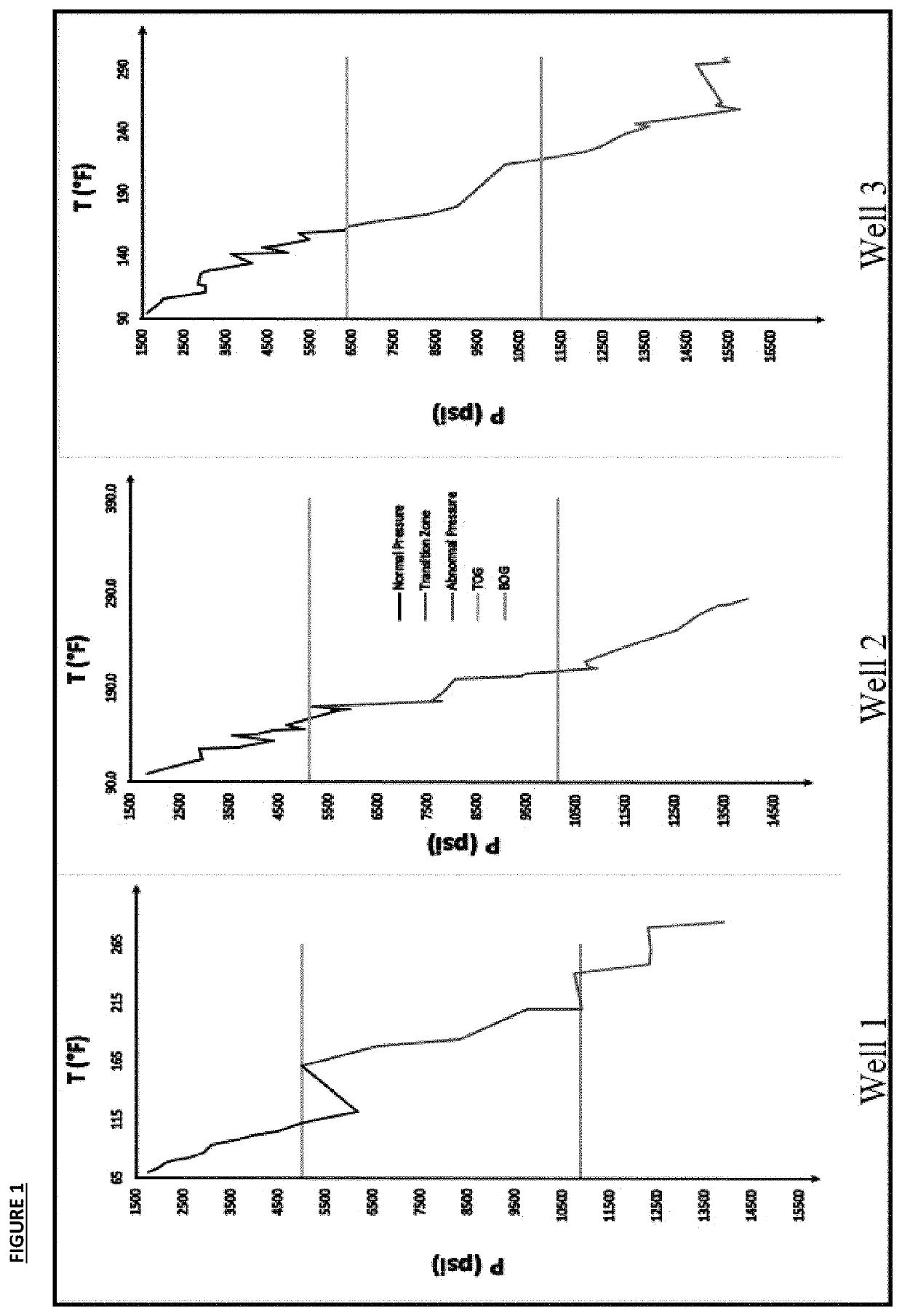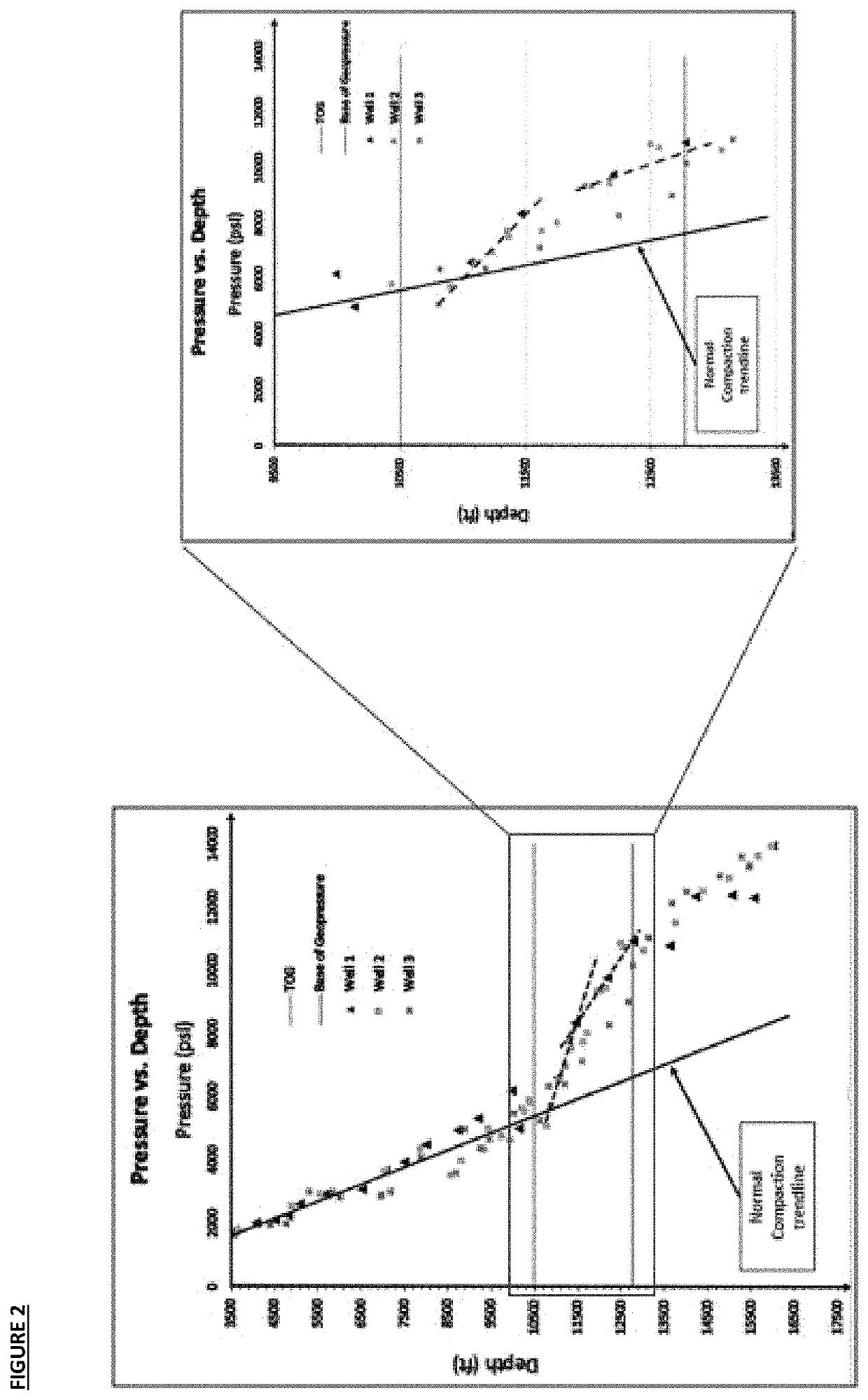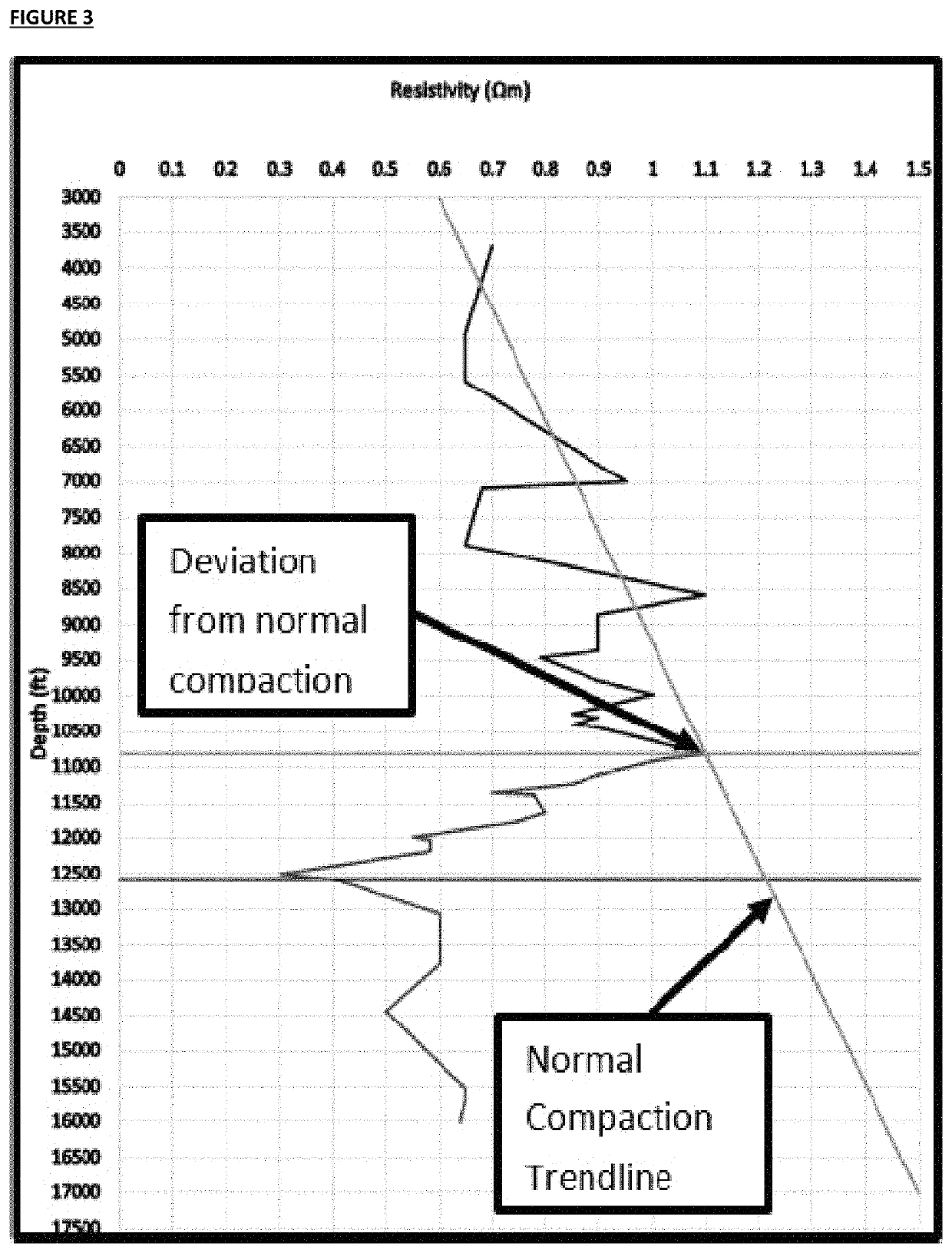Method for determining pore pressure in oil and gas wells using basin thermal characteristics
a thermal characteristic and oil and gas well technology, applied in the field of safe and accurate crude oil and natural gas well drilling, can solve the problems of severe wellbore instability and/or well control problems, failure to incorporate additional thermally induced pressure into the equation, and blowout of wells
- Summary
- Abstract
- Description
- Claims
- Application Information
AI Technical Summary
Benefits of technology
Problems solved by technology
Method used
Image
Examples
Embodiment Construction
[0018]The method described herein is a new method for analyzing pore pressure during pre-drilling planning for crude oil and natural gas wells in order to perform higher accuracy basin modeling. This novel method first develops and applies the concept of thermal equilibrium in the pressure-temperature space. Basin modeling is then used to analyze pore pressures along the depth of the interest and evaluate the effectiveness of seals as a barrier to heat flux. Data has suggested that an effective seal ideally prevents the leakage of pressure and temperature simultaneously from the system.
[0019]Eaton's work is used as the foundation for correlating the Resistivity Log (ohm-meter) values in normal and abnormal pressures across the SP 9-mv) values of shale through the following, known equation (hereinafter “Eaton's Correlation”):
P / D=S / D−0.535(observed shale resistivity / normal resistivity)1.2
In Eaton's Correlation, P / D, S / D, and 0.535 represent pressure gradient, overburden gradient, and...
PUM
 Login to View More
Login to View More Abstract
Description
Claims
Application Information
 Login to View More
Login to View More - R&D
- Intellectual Property
- Life Sciences
- Materials
- Tech Scout
- Unparalleled Data Quality
- Higher Quality Content
- 60% Fewer Hallucinations
Browse by: Latest US Patents, China's latest patents, Technical Efficacy Thesaurus, Application Domain, Technology Topic, Popular Technical Reports.
© 2025 PatSnap. All rights reserved.Legal|Privacy policy|Modern Slavery Act Transparency Statement|Sitemap|About US| Contact US: help@patsnap.com



